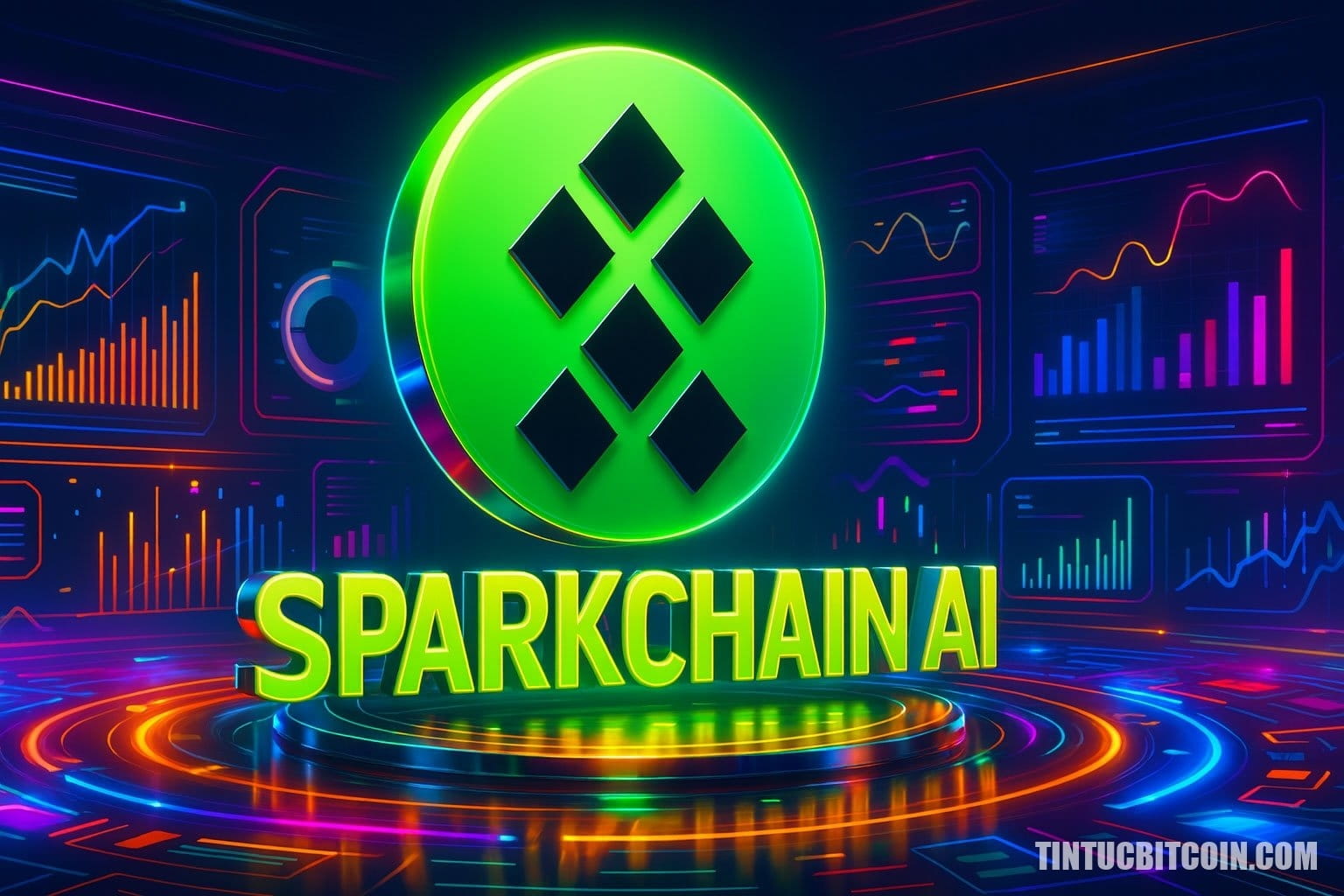
SparkChain AI is a decentralized network in the DePIN field, allowing users to share bandwidth and computing resources to serve AI tasks, while ensuring privacy and data transparency.
This platform harnesses the power of the global community, replacing costly centralized infrastructure, aiming to build a decentralized computing ecosystem for AI with a vision towards 2030.
MAIN CONTENT
SparkChain AI leverages idle resources from users to serve AI, with over 600,000 participants.
The platform applies Zero-Knowledge Proof (ZKP) technology and a transparent evaluation system to ensure data safety.
The development roadmap extends to 2030, aiming to become a leading global decentralized computing infrastructure.
What is SparkChain AI?
SparkChain AI is a DePIN project that allows users to share Internet bandwidth and computing resources to process AI tasks, such as web scraping or distributed computing.
The platform operates decentralized, helping to reduce costs and expand AI processing capabilities. According to data released at the end of 2024, SparkChain AI has achieved over 600,000 active users, 2.5 million completed AI tasks, and 223.5 million units of shared bandwidth.
What is the mission of SparkChain AI?
The mission of SparkChain AI is to democratize the power of AI computing, providing a global community-based infrastructure instead of relying on centralized data centers.
This approach not only optimizes costs but also distributes power, enhancing privacy for users.
This is also a trend that many experts predict will dominate in the decentralized AI era (CoinDesk Research, 2024).
“Distributed AI is indeed the future, as the demand for computing increases dramatically while centralized infrastructure can no longer meet the needs.”
Vitalik Buterin – Founder of Ethereum, ETHGlobal Conference 2024
What are the outstanding features of SparkChain AI?
SparkChain AI stands out thanks to its Sovereign Data Rollup architecture, a reputation evaluation system, and support for various traffic types (PET & FET), helping to ensure both data quality and privacy.
In addition, the ZKP application platform creates non-disclosure proofs, ensuring that data is verified without revealing content, which is particularly important in handling sensitive AI.
What is different about decentralized resource sharing?
Unlike centralized platforms, SparkChain AI leverages idle resources from the global community to perform AI tasks.
Compared to investing in expensive data centers, this model significantly reduces costs and increases flexibility.
According to the McKinsey 2023 report, AI computing costs can account for up to 60% of total AI operational costs if only using centralized infrastructure.
How does SparkChain AI ensure security and privacy?
The platform uses encryption, multi-factor authentication, and ZKPs to ensure data safety. Users can participate in bandwidth sharing without worrying about leaking personal information.
The difference is that SparkChain AI allows a choice between PET (priority on data quality) and FET (priority on privacy), suitable for both commercial and personal needs.
“Users increasingly demand transparency and privacy in data sharing. SparkChain AI has addressed this issue by combining ZKPs and an auditing system.”
Dr. Gavin Wood – Co-founder of Polkadot, Web3 Summit 2024
How does SparkChain AI operate?
The platform operates through components: Spark Nodes, Routers, Validators, ZK Processors, and Spark Data Ledger, working in harmony to process and validate AI data.
The operational process includes: initializing request → routing → executing tasks → transmitting data → validating and creating ZKP → checkpointing on-chain → distributing rewards.
What is the role of Spark Nodes?
Spark Nodes are operated by users, sharing bandwidth and computing resources to perform AI tasks.
This is the foundational platform of the ecosystem, as community participation directly influences processing power and network distribution.
How do Routers and Validators contribute?
Routers manage and distribute tasks to suitable Spark Nodes based on geography, reputation, and network status.
Validators verify data, create ZKP proofs, and record them on the Spark Data Ledger, ensuring transparency and anti-fraud. This helps SparkChain AI build trust from both developers and users.
What is the development roadmap of SparkChain AI?
From 2024 to 2030, SparkChain AI has a detailed roadmap, from launching Spark Lite Node, introducing the SPARK token to expanding the global ecosystem.
Specifically, 2025 focuses on community development, token deployment, and staking; the period from 2026 to 2030 focuses on expanding large-scale AI applications and collaborating with other decentralized networks.
“The development roadmap of SparkChain AI aims to turn the global Internet into a decentralized supercomputer serving AI.”
SparkChain AI – Whitepaper 2024
What impressive figures has SparkChain AI achieved?
As of Q4 2024, SparkChain AI recorded over 600,000 active users, 2.5 million completed AI tasks, and 223.5 million units of shared bandwidth.
This is clear evidence of the strong growth and expansion potential of the project in the future.
User Achievement Metrics Active Users 600,000+ Completed AI Tasks 2.5 million+ Shared Bandwidth 223.5 million units
Frequently asked questions
Is SparkChain AI safe for resource sharing?
Yes, the platform integrates encryption, ZKPs, and multi-factor authentication to ensure user data is always protected.
How to participate in SparkChain AI?
Users can download Spark Lite Node or the Desktop app, share bandwidth and computing resources to earn Spark Points.
How is the SPARK token used?
The SPARK token will support staking, rewards, and trading on DEX, while also serving as an incentive tool in the ecosystem.
How does SparkChain AI differ from centralized AI infrastructure?
It reduces costs, distributes risks, and increases transparency compared to centralized models while providing economic benefits to participants.
Does SparkChain AI have a global roadmap?
Yes, the project aims for global expansion from 2025 to 2030, collaborating with many decentralized networks to become a leading AI infrastructure.
Source: https://tintucbitcoin.com/sparkchain-ai-la-gi/
Thank you for reading this article!
Please Like, Comment, and Follow TinTucBitcoin to stay updated with the latest news about the cryptocurrency market and not miss any important information!
